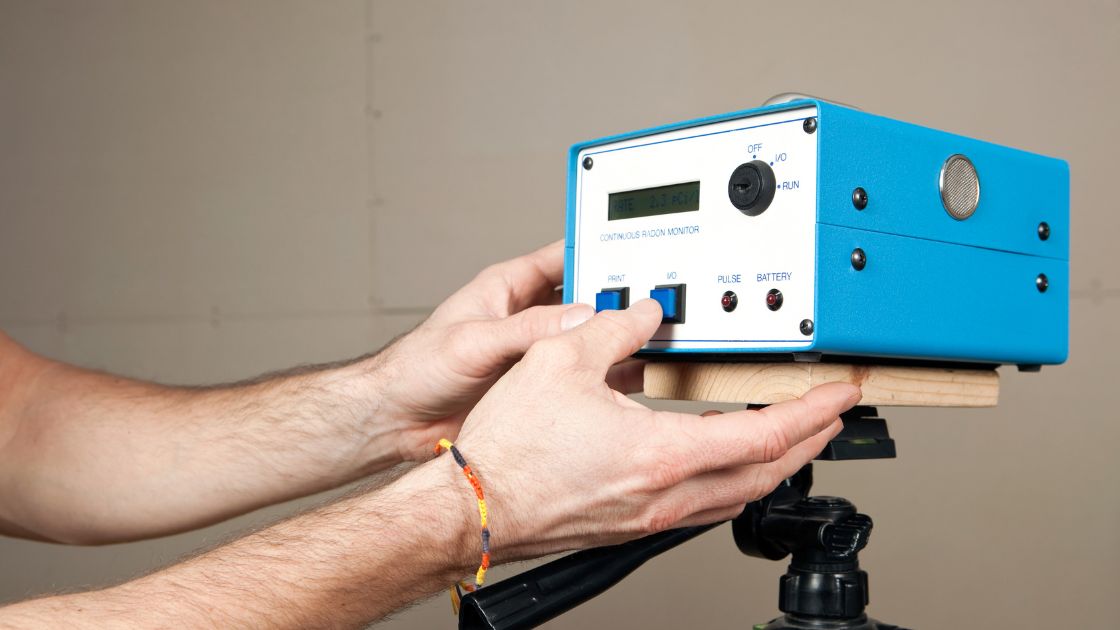|
Do you know what radon is? It's a gas that surrounds us but is also potentially dangerous. Radon is produced when uranium decays in soil, rock, and water. It's odorless and colorless, which makes it hard to detect. The gas can seep into our homes through fractures in the foundation, walls, and flooring, putting humans at risk. That's why it's essential to understand the facts about radon and dispel some common myths. The Myths About Radon1. Radon Is Only a Problem in Certain RegionsThis rumor is not true. Radon may be present in homes wherever you live. While some areas may have higher radon concentrations, every home is susceptible to radon exposure 2. Radon Is Only Present in Soil and RockWhile radon is commonly found in soil and rock, it can also be present in construction materials such as granite, concrete, and brick. This means that even if your home is built with these materials, you can still be at risk for radon exposure. 3. Only Older Homes Are at Risk From RadonThis is a deadly falsehood. Radon can be found in houses of any age because it depends on the local geology and how the house was built. So, whether your house is old or new, you may still be at risk if it's in an area with high radon levels. 4. Radon Levels Can Be Determined by Sight, Smell, or TasteThis is a common misconception, but it's false. Our senses cannot detect radon because it's odorless, tasteless, and colorless. The only way to determine if your home has high radon levels is to test for it. The Truth About RadonBecause radon is a worldwide issue, homeowners must be aware of the dangers and take action to protect themselves and their families. Radon can enter homes through water and construction materials, so even a well-sealed home can still be at risk. The Health Risks of RadonThe Environmental Protection Agency (EPA) reports that radon causes about 21,000 lung cancer deaths yearly in the United States, making it the second most common cause after smoking. About 10% of lung cancer cases in the US are related to radon exposure. The level and length of radon exposure affect the likelihood of developing lung cancer. Reducing Radon LevelsNow that you know the radon facts, taking precautions to safeguard your family and yourself from any danger is critical. You can follow the instructions listed below: Test Your Home for RadonChecking for radon exposure in your house is the first step in protecting it. A radon test kit is available online or at your neighborhood hardware shop. The kit usually contains usage instructions and asks you to send it to a lab for testing. Employ the Services of a Radon Testing and Mitigation SpecialistYou can employ a radon testing and mitigation service if you want a more precise and trustworthy evaluation of the radon levels in your home. They have specialized equipment and expertise for radon detection, so they can advise on the best course of action if excessive radon levels are discovered. Although kits are available for home radon testing, the results might not be as reliable as those from a professional test. Mitigate Radon Levels in Your HomeIf high radon levels are found, they can be lowered. Radon mitigation is a method of lowering radon levels that is most efficient. A system that vents radon gas outside can be installed in your house by a competent radon mitigation contractor. Seal Cracks and Gaps in Your House's Foundation and WallsRadon can enter your home through cracks and openings in the foundation and walls, so sealing those areas can assist. To fill these spaces, use caulk, sealant, or foam. Increase VentilationRadon levels in your house can also be decreased by improving ventilation. You can do this by leaving windows and doors open or setting up a ventilation system. Radon and Your HealthRadon poses a serious threat to your health and should not be disregarded. You may safeguard yourself and your family against the negative consequences of radon exposure by being informed of the facts and taking precautions to reduce your risk. ConclusionRadon poses a major risk to one's health and should not be ignored. It's critical to be informed of the facts and to take precautions to keep yourself and your family safe from exposure. There are many efficient ways to lower radon exposure in your home, including testing it for radon, engaging a professional service, lowering radon levels, sealing cracks and gaps, and improving airflow. By following these tips, you can make your house a secure and healthy environment for you and your loved ones.
Comments are closed.
|
AuthorLouisville KY Radon Mitigation is a premier radon mitigation company. Our experience and knowledge of radon gas and radon systems allows us to be experts in the field and to tackle any radon problem thrown our way. ArchivesCategories |
|
SERVING LOUISVILLE KY & SURRONDING AREAS
|
COMPANY INFOBusiness Hours
7AM–9PM - ALL WEEK Address
Louisville KY Radon Mitigation 10601 Hite Creek Rd Louisville, KY 40241 SOCIAL MEDIA
|
OUR SERVICESCALL US
502-735-0937 Local Partner
Guardian Environmental License # 11523 RMT |


